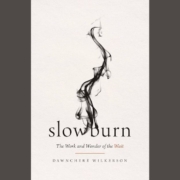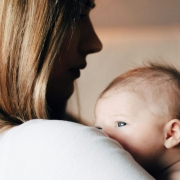Tackling the ‘Momo’ Challenge – Advice from a Mum and a Psychologist
By: Clare Bruce
For kids and teens who spend a lot of time on social media and Youtube (and that’s most of them!), every year seems to bring new threats to their safety and wellbeing – from cyber-bullying to dangerous ‘challenge’ fads.
One of the latest trends to worry parents is the so-called “Momo Challenge” – a meme based around a spooky image of a fictional character with large eyes – originally created by a Japanese artist.
The image was initially popularised on Reddit, then emerged over the past year as malicious pranksters and bullies added it to their social profiles, embedded it in children’s Youtube videos, and added a voice suggesting harmful activities attached to a threat of death.

This week Youtube issued a statement indicating the videos were no longer on their platform, while some experts have said a lot of the talk around the topic was whipped up by media attention and was largely a hoax.
Yet despite its prankster origins, cyber safety expert Jordan Foster didn’t downplay the fad, telling PerthNow that kids can be seriously affected when they unwittingly stumble across this kind of frightening content.
“The psychological effects are profound, and not in a good way,” she said. “It can impact sleep and cause nightmares. It really is a significant issue.”
Responding to Children’s Fear: Pyschologist Tips
Parents and counsellors dealing with children directly affected saw ‘Momo’ as far more than just a harmless hoax.
Mark Basedow is a psychologist in Western Sydney who recently counselled a parent and her child about fears caused by the Momo image. In years gone by Mark has also had children come through his practice for counselling after being terrified by thriller movies.
He encourages parents to remember how vulnerable children are, to place filters and limits on their screens, and not use phones and the internet as a babysitter.
When children have been traumatised, he suggests some techniques that have proven successful for many.
“Sit down with your child and remind them, ‘It’s just a picture, it’s not real, when you watch TV, that’s a drama. Teach them ‘it’s not real’, ‘it’s just pretend’,” Mark said.
“Comfort and embrace them, show them affection and warmth, restore their home as their safe place.”
“They can imagine they have a remote control and reverse to what they were watching before they saw the scary image…the imagination is very powerful.”
“If they’re really traumatised and they’re waking up at night, and might be dreaming about it, you can try telling them , that in your mind there is the screen of your imagination, and you can fast forward and pause and reverse it like on the TV.
“They can imagine they have a remote control and reverse to what they were watching before they saw the scary image.
“It gives them control. Remarkably, that works quite well. The imagination is very powerful.”
He added that every child is different and some children may respond well to reassurance, while others may need more help, such as counselling.
A Parent’s Approach
One parent whose child was affected is mum-of-two Cara Harris. She became aware of the ‘Momo’ content in 2018, when her 11-year-old daughter was struggling to sleep after watching a disturbing video.
“After a couple days of not sleeping, my daughter showed me the video,” said Cara. “I watched a few seconds of it and I said ‘I don’t need to see any more’. From what I saw, it said something like it will ‘kill you in your sleep’.
“We let our daughter sleep with us for a while and it settled down, but then later she went through a second phase of being afraid of the dark and sleeping.”
Being people of faith, Cara and her husband not only comforted and reassured their daughter, but also taught her to pray through her fears.
“We explained to her that there’s mental battles that we can’t fight for her – that she has to have her own conversation with God and her own scriptures that she holds to when fear comes,” Cara said. “We took turns spending time with her practicing that, then encouraged her to push through and learn to sleep through the night without fear on her own.”
Their daughter no longer has fear of sleeping or the dark and prays for other children who have been affected.
“When the kids were little, if we watched a DVD together, we discussed what we got out of it, what we thought was appropriate, and what wasn’t.”
Cara encourages other parents to be aware of all content and social platforms their children are viewing, and to put parental controls in place around access and time limits.
“We’ve consciously made room to discuss all media that comes into our home,” Cara said. “When the kids were really little, if we watched a DVD together, we discussed what we got out of it, what we thought was appropriate, and what wasn’t.
“And as the kids have got older, they’ve gained access to more media – but I think our approach early on has set us up to handle this challenge really well.
“A huge part of the issue is three-year-olds with free reign on YouTube. Our daughter didn’t have access to the internet until she was 7.”
The creator of the ‘Momo’ sculpture has issued a statement saying he regretted the way his artwork was hijacked, so much that he has now destroyed it.
Article supplied with thanks to Hope Media.
About the Author: Clare is a digital journalist for the Broadcast Industry.


